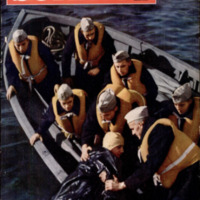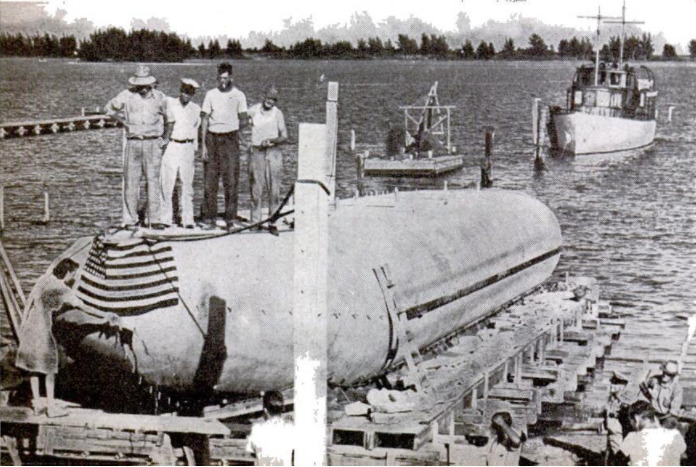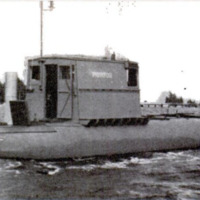Crewless ships for phantom convoy
Item
-
Title (Dublin Core)
-
Crewless ships for phantom convoy
-
Article Title and/or Image Caption (Dublin Core)
-
Crewless ships for phantom convoy
-
extracted text (Extract Text)
-
RIDING at anchor in the Capitol Yacht
Basin at Washington is one of the
strangest ships afloat. Appropriately named
the Phantom, she resembles anything but a
sea-going craft. Her deck is almost flush
with the water line. Missing are smoke-
stacks, superstructure, and cabins.
The Phantom is a 91-foot model of a rev-
olutionary-type concrete ship, completely
automatic and designed to travel in convoys
of ten or more operated by remote radio
control. In convoy the crewless ships are
expected to slip through the water at 10
knots, invisible to enemy raiders beyond a
radius of two miles. Progress will be con-
trolled by an escorting vessel using a secret
system of ultrashort-wave and code-signal
devices. If the control vessel is sunk, the
Phantoms will proceed for two hours on the
same course. Then mechanisms aboard will
halt them automatically and send distress
signals, giving their approximate position.
The Phantoms are to be 260 feet long, 36
feet on the beam, and 27 feet deep—small
for modern shipping—but they will have a
dead-weight capacity of 2,000 tons. Diesel
engines of 1,000 horsepower will drive
them under automatic control. Except for
air intakes for the engines, the craft will be
completely sealed.
A series of 10 to 15 watertight compart-
ments will make a Phantom fairly resistant
to torpedo attack. If a torpedo hit floods
one of these compartments, ballast tanks
with automatic pumps will trim the ship.
All vital parts will be concentrated within
a space less than a tenth of the ship's total
length.
Into this ingenious plan have gone the
skill of F. B. Woodworth, radio expert who
helped develop ship-to-shore radiotelephone
service, and Vladimir Yourkevitch, designer
of the Normandie’s hull. Their model, the
Phantom, is awaiting Government tests.
They believe that Phantom convoys will
save the lives of many merchant seamen
and help solve United Nations shipping
problems.
-
Language (Dublin Core)
-
eng
-
Date Issued (Dublin Core)
-
1943-03
-
pages (Bibliographic Ontology)
-
76
-
Rights (Dublin Core)
-
Public Domain (Google Digitized)
-
Archived by (Dublin Core)
-
Matteo Ridolfi
-
Marco Bortolami (editor)
 Popular Science Monthly, v. 142, n. 3, 1943
Popular Science Monthly, v. 142, n. 3, 1943




